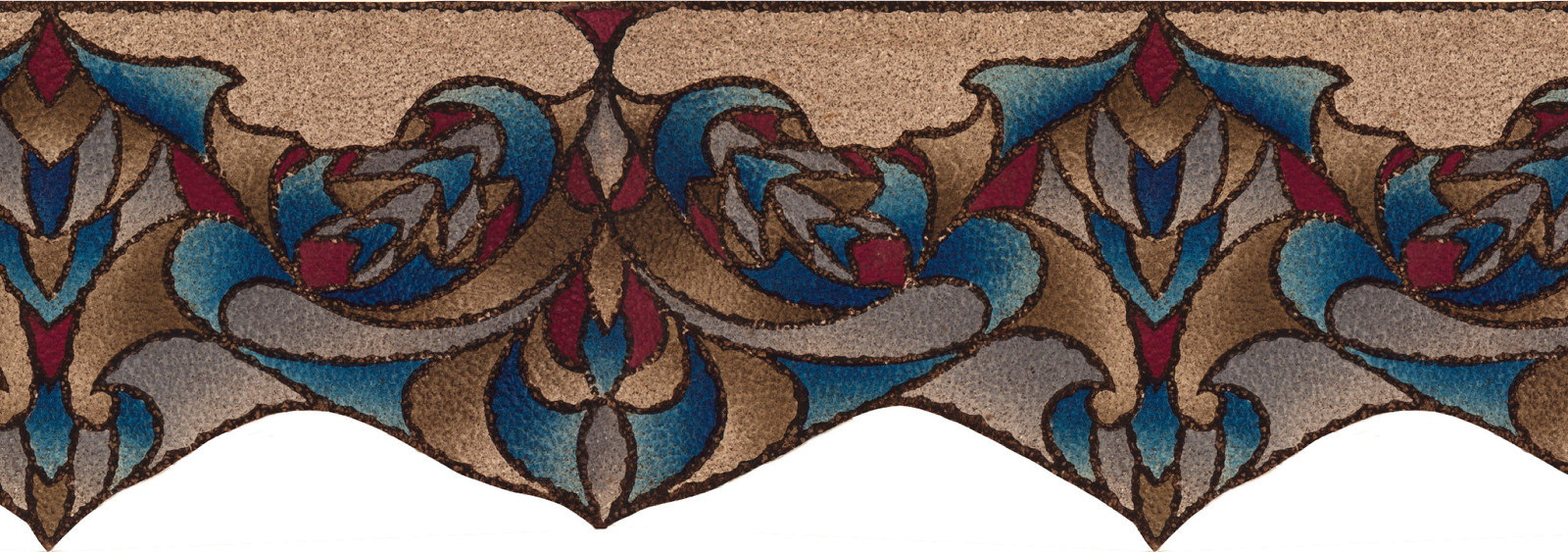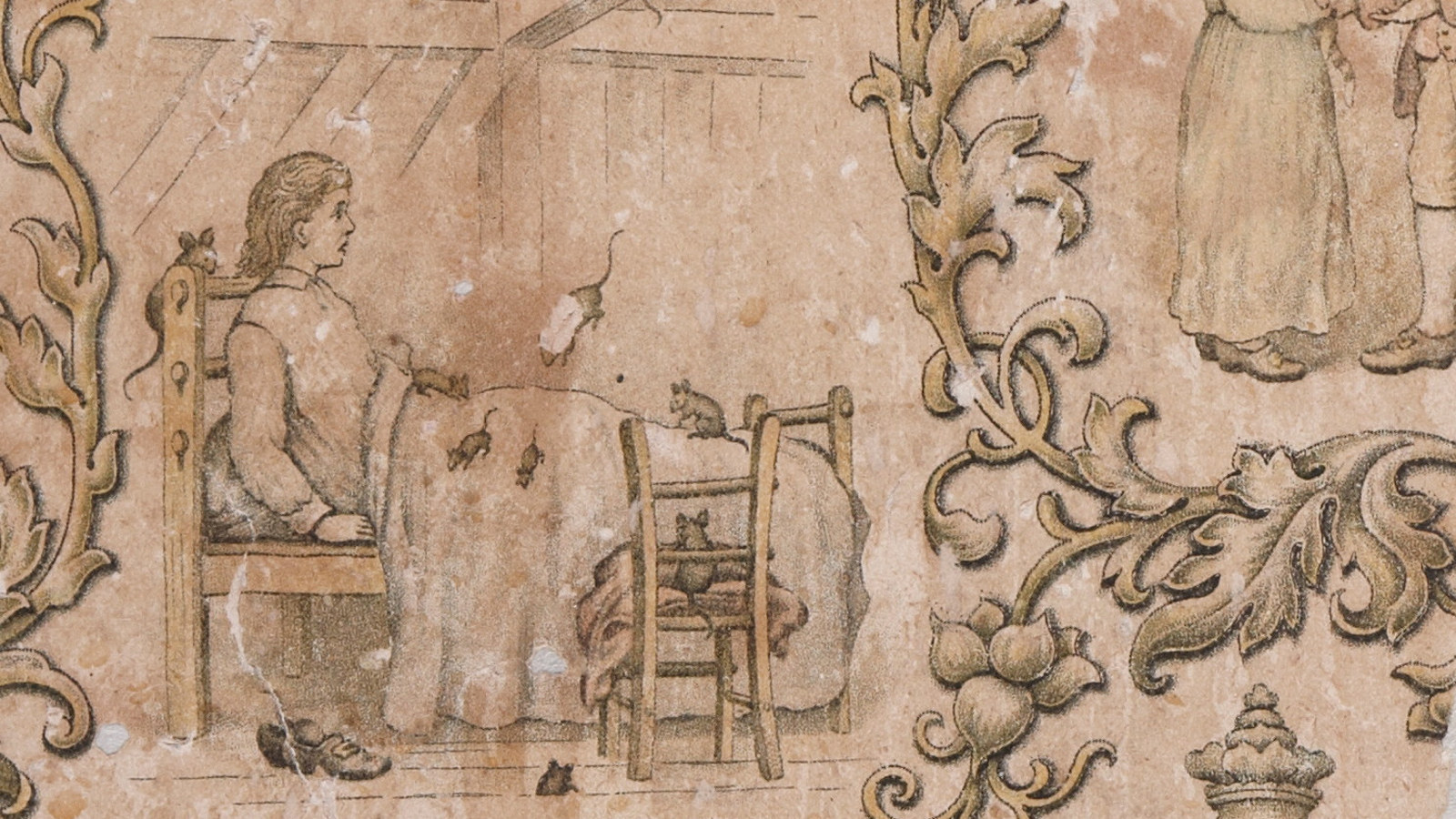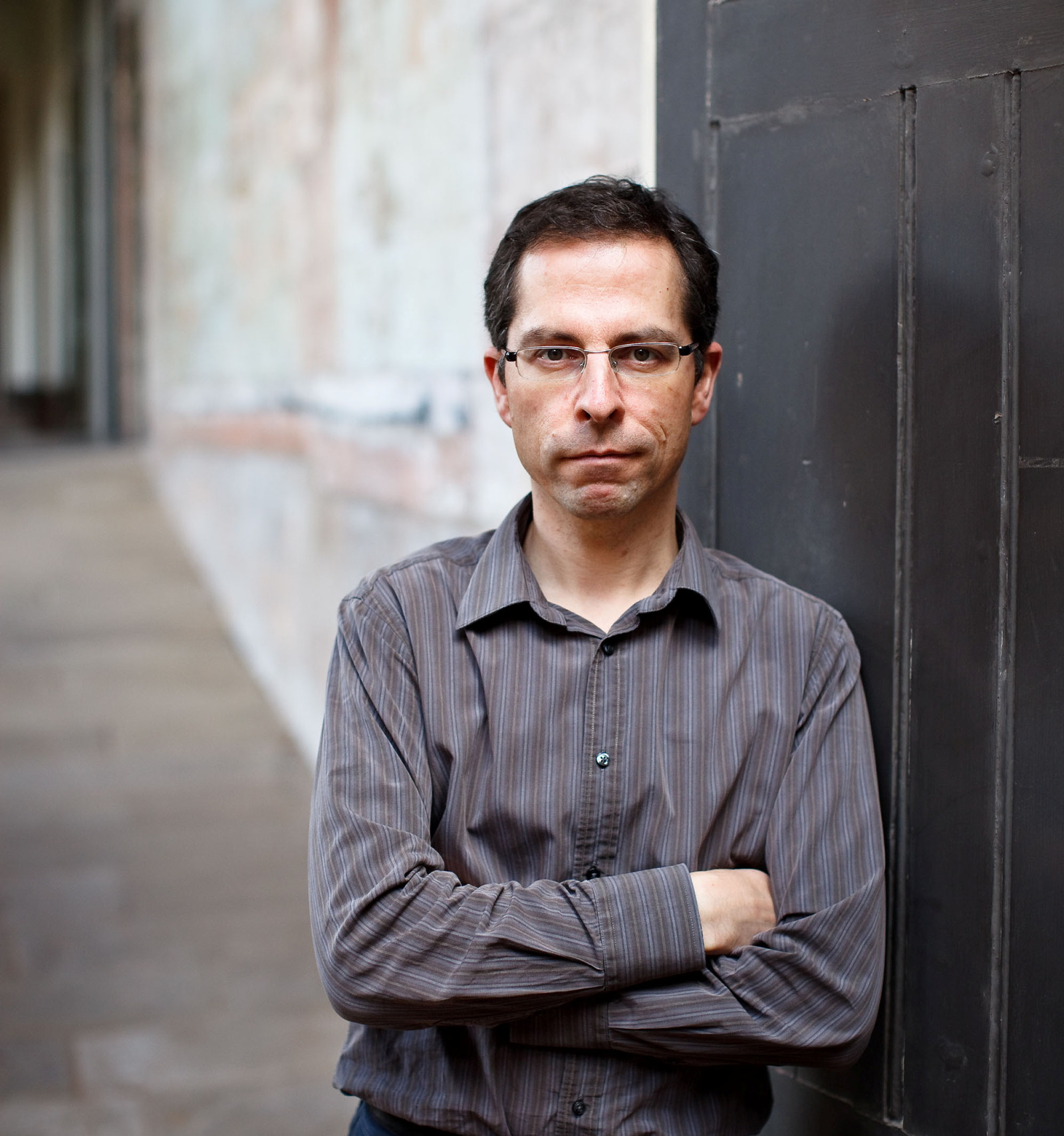Wallpaper recreated for 'The Harp in the South'
For anyone attending the Sydney Theatre Company (STC) play, The Harp in the South, adapted from Ruth Park’s well-known novels, you may have spied wallpapers running up the back wall of the set.
The wallpapers, of at least three different designs seemingly pasted over the top of each other, have recently been reproduced from historic wallpapers in the Caroline Simpson Collection.
The Harp in the South wallpaper was recreated to evoke the main setting for the novels and play: the Darcy family’s run-down terrace house at 12½ Plymouth Street, Surry Hills in 1940s Sydney. In the opening chapter of The Harp in the South, Ruth Park writes:
There were many houses like number twelve-and-a-half, smelling of leaking gas, and rats, and mouldering wallpaper which has soaked up the odours of a thousand meals.1
The set designers from The Harp in the South found inspiration for their work from the historic wallpapers that are part of the Caroline Simpson Collection. A number of wallpapers viewed in the collection had similar backgrounds to the ones in the Park’s novels: they were from working class homes, often inexpensive and seemingly flimsy, and were originally designed to quickly spruce up an interior.
The STC set designers were particularly interested in the common practice in many Australian working class homes of pasting new wallpaper over the old without first removing the old. According to members of the Painters Union in Sydney in 1909, some homes had so many layers of wallpaper, it was claimed that ‘were the paper scraped off the walls in some instances the rooms would be quite a foot larger.’2 The practice of pasting one wallpaper over the top of another was eventually considered unhygienic by many residents and city authorities and a harbour for all kinds of pests. The layers of wallpaper in houses like 12½ Plymouth Street Surry Hills would also soak up the dust, grit, rising damp and coal fires.
The Caroline Simpson Library has found many examples of several layers of wallpaper still evident on the walls of Australian homes. The most remarkable example comes from one room of a timber slab hut in Prospect, west of Sydney, where 26 layers of wallpaper were uncovered, installed between 1908 and the 1950s. The house had been in long term ownership of the Neeves family, who apparently re-wallpapered around once every two years. And it was in fact, from the Neeves Cottage wallpapers that the set designers from the STC selected examples for digital reproduction… though ‘the odours of a thousand meals’ at 12½ Plymouth Street were more difficult to replicate and perhaps best left to the imagination.
Notes
1. Ruth Park, The Harp in the south, Penguin Books, 1948, p1.
2. 'The plague. Shocking charges by Painters' Union: Inspection of buildings demanded. Wallpaper six inches thick', Sydney Morning Herald, 24 March 1909, p11.
Published on
Related
Browse all
Wall to wall: a marvellous wallpaper collection
A remarkable donation of over 3000 wallpaper samples by John and Phyllis Murphy adds to our existing collection to form Australia’s largest repository of historic wallpapers

Handmade wallpaper: Morrison's of Sydney
Morrison's built a successful wallpaper manfacturing business in early 20th century Sydney

Dick Whittington and his Cat
The tall tale of Dick Whittington and his adventurous cat reminded children that good deeds and generosity will ultimately lead to great fortune

Wallpaper 'sandwich' from Pyrmont
A ‘sandwich’ of many layers of wallpaper uncovered behind timber panelling has opened a small, colourful window into the popularity of wallpaper in mid 19th century Sydney
